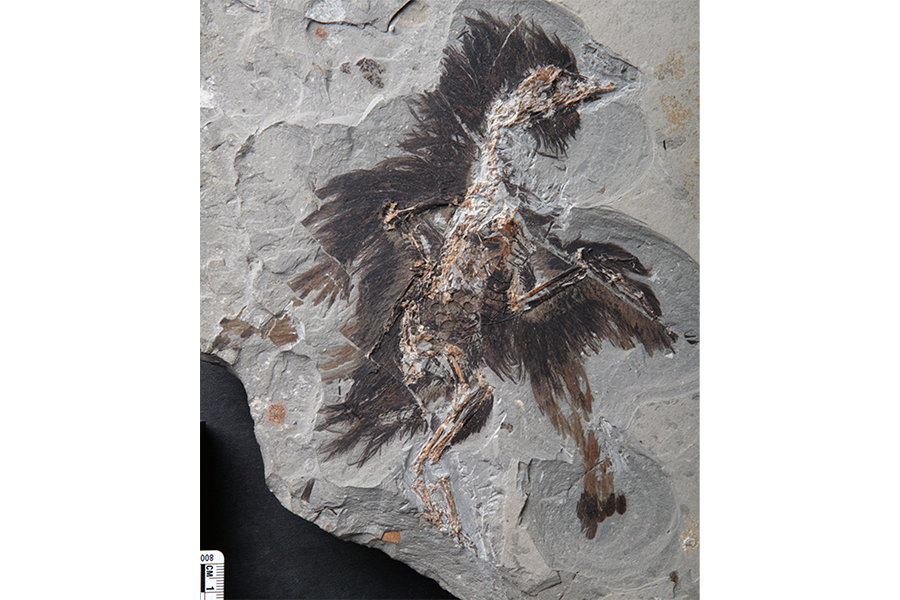What color was this dinosaur? Keratin discovery yields long-lasting clues
Loading...
For scientists who wish to identify the coloring of ancient fossilized creatures, a new study finds that hope is a thing with feathers.
Approximately 130 million years have passed since the “Confucius bird,” or Eoconfuciusornis, perished, but its feathers remained intact enough for scientists to identify proteins within its feathers. Despite its age, researchers say that this tiny bird has given them the tools to possibly identify the coloring of other fossilized dinosaur species.
"This study is the first to demonstrate evidence for both keratin and melanosomes, using structural, chemical and molecular methods," said paleontologist and study author Pan Yanhong in a press release. "These methods have the potential to help us understand – on the molecular level – how and why feathers evolved in these lineages."
First discovered in 2008, the "Confucius bird" was likely the size of a crow, and is the oldest fossilized creature that scientists have identified as having a toothless bill. When the bird was first discovered, researchers told National Geographic that they were unsure what it might have looked like – "Confucius" might have been brown for camouflage, or brightly colored like modern tropical birds.
Now, however, scientists know that the specimen they examined for the recent study, published in the Proceedings of the National Academy of Sciences, was either brown or dark in coloring – drab colors for an exciting bird that might have made all the difference to the future of fossil research.
In order to unlock the keys to the bird's coloring, the team of US- and China-based scientists examined a protein known as beta-keratin in the bird's ancient feathers.
Beta-keratin might be familiar to those who remember high school biology – it is the same substance that makes fingernails, bird beaks, and animal scales hard. Evolutionarily, scientists believe that bird feathers evolved from reptilian scales.
As a protein, beta-keratin is arranged in structures within a substance, whether feathers or scales, and it is the pattern of those structures that determines their function.
Within the Confucius bird's keratin structures, researchers found tiny melanosomes, organelles that are responsible for pigmentation, or color.
Researchers say that it was important to first identify the keratin within the feathers. Otherwise, any color-generating melanosomes that they found could have come from another substance or creature that was fossilized alongside the bird.
"If we couldn't find the keratin, then those structures could as easily be microbes, or a mix of microbes and melanosomes – in either case, predictions of dinosaur shading would not be accurate," paper co-author and North Carolina State University biologist Mary Schweitzer said in a press release.








